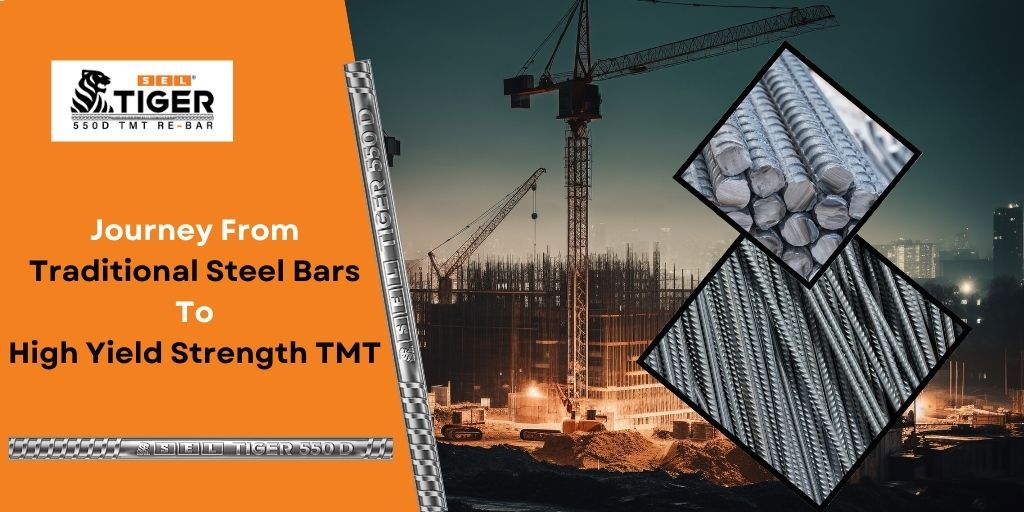
Thermo mechanically treated bars are a very recent invention in construction. Produced through rapid heating and quenching methods, these reinforcement steel bars are the most advanced building materials that modern civilisation has experienced till now. But we didn’t always have the TMT bar with us to help build cutting-edge industrial, commercial and residential infrastructure. For that matter, even steel is a lot newer than for example let’s say wood and concrete. In this blog, we shall explore the journey that the construction industry has been through-all the way from wood to concrete to traditional steel bars and then finally landing up with the high-yield strength TMT so that as a business or an individual you know the ins and outs of building materials then and now and ultimately choose the one that you thinks fits your needs the best.
Till the mid-1960s, classic plain mild steel bars and rods were used. Those were followed by reinforcement steel bars such as CTD (Cold Twisted Deformed) and HYSD (High Yield Strength Deformed). These were the bars that were initially used to reinforce concrete. CTD & HYSD were useful in replacing older steel bars such as Mild Steel because of having a greater yield stress. The yield stress of CTD bars is 415 MPa, while for mild steel the yield stress is 250 MPa. Until the introduction of TMT, no other steel bar had as much strength, flexibility and reliability as these.
With better manufacturing facilities, more and more companies started using blast furnaces and cooling systems during production. This really helped the commencement of the TMT Bar. Heating the rebars to about 900 °C, and then instantly cooling them to produce rebars with a unique microstructure- one that has a soft ferrite core but a very hard outer surface, was an innovation that the industry of building and construction had not experienced yet. Introduced in the 1980s in India, the initial streel grades that were available were Fe415 & Fe500. This now has expanded to Fe 600D. Equipped with the optimum combination of high strength, ductility, weldability, corrosion resistance and other desired chemical and mechanical properties, they are responsible for all critical infrastructural growth around the world.
The following is a list of differences that highlight the progress construction has made by shifting from traditional steel bars to TMT bars:
Our TMT bars ready with a special ribbed design very critically produce better bondability with cement. Not only do we manufacture rebars through stringent facilities that stand out with top-quality features, but also our widespread warehouse and distributorship network means that you have no reason to worry about loss of quality during transportation.
Established as one of the best TMT bar suppliers for decades throughout the entire country, our commitment to customer satisfaction helps you get the best support and guidance post sales too, thus covering your contingencies every time like it’s ours. Collaborating with us is thus always a hallmark of better cost efficiency and performance.
TMT Bars are the latest innovations in the construction industry. Most suited for projects of large scale and where structural integrity is supreme, they exhibit outstanding corrosion resistance, strength, ductility, weldability and more.
TMT bars don’t just facilitate the building of large-scale conventional structures but also architecture that has to be intricately designed and made. Skyscrapers, bridges, flyovers, dams, platforms, residences and other public utilities such as refineries, schools, and hospitals in both urban and rural areas are all applications of our TMT bars.
The manufacturer you opt for is the primary decision that you need to make. Looking into their previous track record that is always a must. Other than that, factors like cost efficiency, strength, ductility, eco-friendliness and corrosion resistance all matter a lot too.
About The Author: Bishan Mukherjee is an experienced author who has been writing on construction in India for a decade now. Armed with his previous on-site experience across various companies, his writings are known for provide valuable insights and accurate information to the readers.